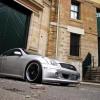RB20DET Issues
Announcements
-
Similar Content
-
Latest Posts
-
Like I said, "black magic" LOL In the end, it is what it is, and hopefully, what this here knuckle head has done is an improvement and not a hindrance Not that I actually notice any negatives now, or that I will get any seat of the pants benefits when all is said and done, but best practice says I shouldn't be pulling intake air from the hot engine bay Famous last words: I cannot see it being any worse than what it is at the moment 🤔
-
If the gases flowing in those two tracts had the same properties, you could maybe use such broscience. But the exhaust has a different composition, different normal density, different actual density (because of different normal density, and mostly because of the massively higher temperature), and different viscosity (again because of much higher temperature). Consequently, all of the fluid dynamics parameters that matter, that you calculate from these inputs, such as the Reynolds number, friction factors (for wall friction) and so on, are all incomparable.
-
And we shall have to presume that Canada is the same?
-
By joshuaho96 · Posted
In the US almost everything is E10. It can't exceed 10% by much or fuel systems have trouble adapting. At the same time because MTBE, MMT, and TEL are all banned they need as much ethanol in it as possible to boost octane. -
I was mostly jesting. In my experience (and probably only my experience) the R34 GTT physical airbox space is actually too small to flow the amount of power it wanted. By sealing the box, I made it so it could only be fed by the ducts themselves. So you can seal it up and get nice cold air which IS good, but at a certain crossover point: More Hot Air > Less Cold Air I don't think you're at this point. In my case merely ducting the hot air intake with a very focused set of ducts counteracts the fact it's in a V8 engine bay. More cold air obviously best. The solution looks great.
-





Recommended Posts
Create an account or sign in to comment
You need to be a member in order to leave a comment
Create an account
Sign up for a new account in our community. It's easy!
Register a new accountSign in
Already have an account? Sign in here.
Sign In Now